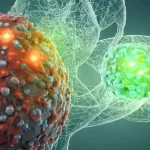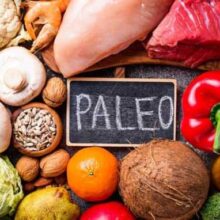The Hidden Truth Behind Statin Drugs: Unveiling the Risks
In today’s fast-paced world, where the quest for a healthier life often leads us down the path of pharmaceutical solutions, it’s crucial to pause and scrutinize the tools we’re using in our health arsenal. Among these tools, statin drugs have emerged as a beacon of hope for those battling high cholesterol levels, promising a straightforward path to improved cardiovascular health. However, beneath the surface of their widespread prescription lies a complex web of potential risks and side effects that demand our attention. With billions of dollars spent annually on prescription medications, it’s evident that statins hold a significant place in this pharmaceutical panorama.
Yet, as we delve deeper into recent research, a troubling narrative unfolds, revealing the possibility of rapid aging, brain damage, diabetes, and more. This article aims to shed light on the statin drugs scam, offering a balanced view that navigates through the hype to uncover the truth behind the side effects associated with these medications. Through a journey of exploration, let’s unravel the intricacies of statin drugs and empower ourselves with knowledge, paving the way for informed health decisions in our quest for wellbeing.
The Mechanism and Mirage of Statins
Statins stand at the forefront of the fight against high cholesterol, a condition linked with an increased risk of heart disease and stroke. By inhibiting a key enzyme in the liver, these drugs significantly lower the production of LDL cholesterol, often dubbed the “bad” cholesterol. This process not only reduces the risk of plaque formation in the arteries but also purportedly aids in the reabsorption of existing plaques, a mechanism that holds promise for reducing heart attack risks. However, the simplicity of this mechanism belies the complexity of the body’s biochemical balance, raising questions about the long-term implications of altering cholesterol synthesis, a crucial component of cellular and neurological health.
As the prescription of statin drugs becomes increasingly commonplace, a critical examination of their impact is essential. The allure of statins is undeniable; a single pill to manage cholesterol levels and protect against heart disease is an attractive proposition for both doctors and patients. Yet, this perceived simplicity and efficacy mask a deeper issue. Cholesterol is not merely a villain in the cardiovascular narrative but a vital substance required for various bodily functions, including hormone production, cell membrane integrity, and neurological health. The reduction of cholesterol through statins, therefore, introduces a potential trade-off, diminishing essential biological processes in the quest to prevent cardiovascular events.
Amidst their widespread adoption, statins have become a symbol of modern medicine’s approach to health management: aggressive intervention aimed at controlling symptoms rather than addressing underlying causes. This perspective, while effective in certain contexts, overlooks the nuanced role of lifestyle and diet in managing cholesterol levels and overall health. As we delve deeper into the statin debate, it becomes evident that the solution to cardiovascular health is not as straightforward as it appears, prompting a reevaluation of our reliance on these medications and a call for a more holistic approach to health.
The Shadow Side of Statins: Unveiling the Side Effects
Beneath the surface of statins’ celebrated benefits lies a shadow side, a range of side effects that have sparked concern among healthcare professionals and patients alike. While statins are lauded for their capacity to lower cholesterol and protect against heart disease, their impact extends beyond these benefits, touching on aspects of health that are fundamental to our well-being. The narrative of statins as a panacea for heart health is complicated by reports of premature aging, cognitive decline, muscle weakness, and an increased risk of diabetes — side effects that can significantly diminish quality of life and overshadow the drugs’ cardiovascular benefits.
Muscle pain and weakness, known as myalgia, emerge as one of the most common complaints among statin users, affecting daily activities and overall physical function. This symptom, while often dismissed as a minor inconvenience, can be indicative of a more serious condition, rhabdomyolysis, where muscle breakdown leads to kidney damage and, in severe cases, failure. Furthermore, the cognitive implications of statin use, including memory loss and confusion, pose significant concerns, especially for the aging population. These side effects challenge the notion of statins as a harmless preventive measure, highlighting the critical need for personalized medicine and careful consideration of individual risk factors.
The link between statins and diabetes adds another layer of complexity to the decision-making process for potential users. By interfering with the body’s insulin production and sensitivity, statins may inadvertently increase blood sugar levels, leading to a diagnosis of type 2 diabetes in individuals without previous symptoms. This paradoxical outcome forces us to question the cost-benefit ratio of statin therapy, especially in populations at risk for metabolic disorders. As research continues to shed light on these side effects, the dialogue around statins shifts from one of unequivocal endorsement to a more nuanced discussion that acknowledges the potential risks alongside the benefits.
The Statin Dilemma: Navigating Between Benefits and Risks
The decision to use statin drugs is often framed as a straightforward choice in the pursuit of cardiovascular health. However, this decision is anything but simple, nestled within a complex web of benefits and risks that require careful navigation. On one side of the equation, statins offer a proven track record in reducing high levels of LDL cholesterol, a key factor in the prevention of heart attacks and strokes. Their role in stabilizing plaques within the arteries and potentially reducing the occurrence of cardiovascular events has been well-documented, making them a go-to option for many healthcare providers.
Yet, the journey towards informed consent is paved with critical considerations, chief among them being the individual’s personal health history and the potential for adverse effects. For individuals with a high risk of cardiovascular disease, the benefits of statins may far outweigh the risks, offering a lifeline in the management of their condition. However, for those with lower risk factors or a predisposition to conditions exacerbated by statins, such as diabetes or cognitive impairments, the equation changes significantly. The challenge lies in balancing these potential benefits with the side effects, a task that demands a personalized approach to healthcare.
Adding to the complexity is the evolving nature of research on statins and cardiovascular health. As new studies shed light on the nuanced effects of these drugs, both positive and negative, the dialogue around statins continues to evolve. Healthcare providers and patients alike are called upon to stay informed, engaging in open discussions about the latest findings and how they impact the individual’s unique health profile. This dynamic landscape underscores the importance of ongoing education and dialogue in navigating the statin dilemma, ensuring that decisions are made based on a comprehensive understanding of the risks and benefits.
The Role of Lifestyle in Cholesterol Management
The discourse on managing high cholesterol often zeroes in on medication as the primary solution, yet the power of lifestyle modifications stands as a testament to the body’s capacity to heal and regulate itself. Dietary changes, regular physical activity, and stress management are not just adjuncts to medication but can be potent tools in their own right. Embracing a diet rich in fruits, vegetables, whole grains, and healthy fats, while reducing intake of saturated fats and processed foods, can significantly impact cholesterol levels and overall cardiovascular health. Moreover, incorporating regular exercise into one’s routine not only aids in weight management but also improves the body’s metabolism and strengthens the heart. Acknowledging the role of lifestyle changes requires a shift in perspective, viewing health as a holistic endeavor where medication is but one piece of the puzzle.
This approach empowers individuals, placing them at the helm of their health journey and offering a sense of control over their wellbeing. It’s a reminder that, while statins may play a role in managing cholesterol, the foundation of heart health is built on the choices we make every day. Furthermore, the integration of stress reduction techniques, such as meditation and mindfulness, can alleviate the physiological impacts of stress on cholesterol levels and heart health. Quitting smoking and moderating alcohol intake are also critical steps in this holistic approach, directly contributing to the reduction of heart disease risk. These lifestyle modifications, when implemented consistently, can dramatically transform one’s health profile, reducing the reliance on medications and fostering a more vibrant, heart-healthy life.
Practical Tips for Managing Cholesterol Without Statins
Managing cholesterol levels and improving heart health is a multifaceted endeavor that extends beyond the prescription pad. For those looking to either complement their statin therapy with lifestyle changes or manage their cholesterol naturally, here are some actionable tips that can make a significant difference:
Increase Fiber Intake: Opt for foods high in soluble fiber, like oats, beans, lentils, apples, and pears, to help reduce LDL cholesterol.
Incorporate Healthy Fats: Use monounsaturated and polyunsaturated fats found in avocados, olive oil, nuts, and fatty fish in place of saturated fats.
Limit Processed and High-Sugar Foods: Cut down on processed items and foods high in added sugars to control weight and lower cholesterol levels.
Engage in Regular Physical Activity: Strive for at least 150 minutes of moderate aerobic exercise or 75 minutes of vigorous exercise each week, including walking, jogging, cycling, or swimming.
Maintain a Healthy Weight: Shedding 5-10% of body weight if overweight can significantly impact cholesterol levels and heart health.
Quit Smoking: Stopping smoking boosts your HDL cholesterol level and enhances overall heart health.
Limit Alcohol Intake: Moderate drinking or avoiding alcohol can help reduce cholesterol levels and the risk of heart disease.
Manage Stress: Regularly practice stress-reduction techniques such as yoga, meditation, or deep-breathing exercises to lower the negative impacts of stress on heart health.
Implementing these strategies requires commitment and consistency, but the benefits for your cholesterol levels and overall heart health are substantial. Each step taken towards these lifestyle changes not only contributes to a healthier heart but also enhances overall quality of life.
Monitoring and Adjusting: The Path to Personalized Health
In the journey towards optimal cholesterol levels and heart health, monitoring progress and making adjustments based on individual responses is key. This personalized approach ensures that lifestyle changes and any interventions are effective and sustainable over the long term. Here are some guiding principles for this ongoing process:
Regular Health Check-ups: Schedule regular check-ups with your healthcare provider to monitor cholesterol levels and assess the effectiveness of your chosen strategies. These appointments are opportunities to discuss any concerns and adjust your plan as needed.
Self-Monitoring: Keep track of your own health through diary keeping or apps that log dietary intake, exercise, and stress management practices. This self-monitoring can highlight areas of success and those needing improvement.
Adopting a personalized health strategy is not a one-size-fits-all solution but a dynamic process that respects the uniqueness of each individual’s body and lifestyle. By staying informed, engaged, and flexible in your approach, you can navigate the path to improved cholesterol management and heart health with confidence and clarity.
Empowering Choices for Heart Health
The journey through understanding statin drugs, their benefits, and the potential side effects underscores the importance of informed, empowered choices in healthcare. While statins serve as a valuable tool against cardiovascular disease, their application is nuanced, demanding a personalized approach to health management. The exploration into cholesterol management strategies, from lifestyle modifications to medication, illuminates the power of individual action and the significance of personalization.
In this context, embracing lifestyle changes alongside or in lieu of pharmacological interventions showcases the proactive steps individuals can take towards their own health. The incorporation of dietary adjustments, physical activity, and stress management not only complements medical treatments but often forms the cornerstone of a heart-healthy lifestyle. These choices, deeply personal and reflective of one’s circumstances and beliefs, underscore the dynamic interplay between medical advice and personal health philosophies.
This narrative invites individuals to engage actively with their health decisions, emphasizing the need for a holistic perspective on wellness that balances medication with natural strategies and regular monitoring. In navigating these choices, the path to optimal health emerges as a journey of continuous learning, adaptation, and personal growth, highlighting the importance of patient empowerment and informed choice in achieving heart health.
The post The Hidden Truth Behind Statin Drugs: Unveiling the Risks appeared first on Healthy Holistic Living.












